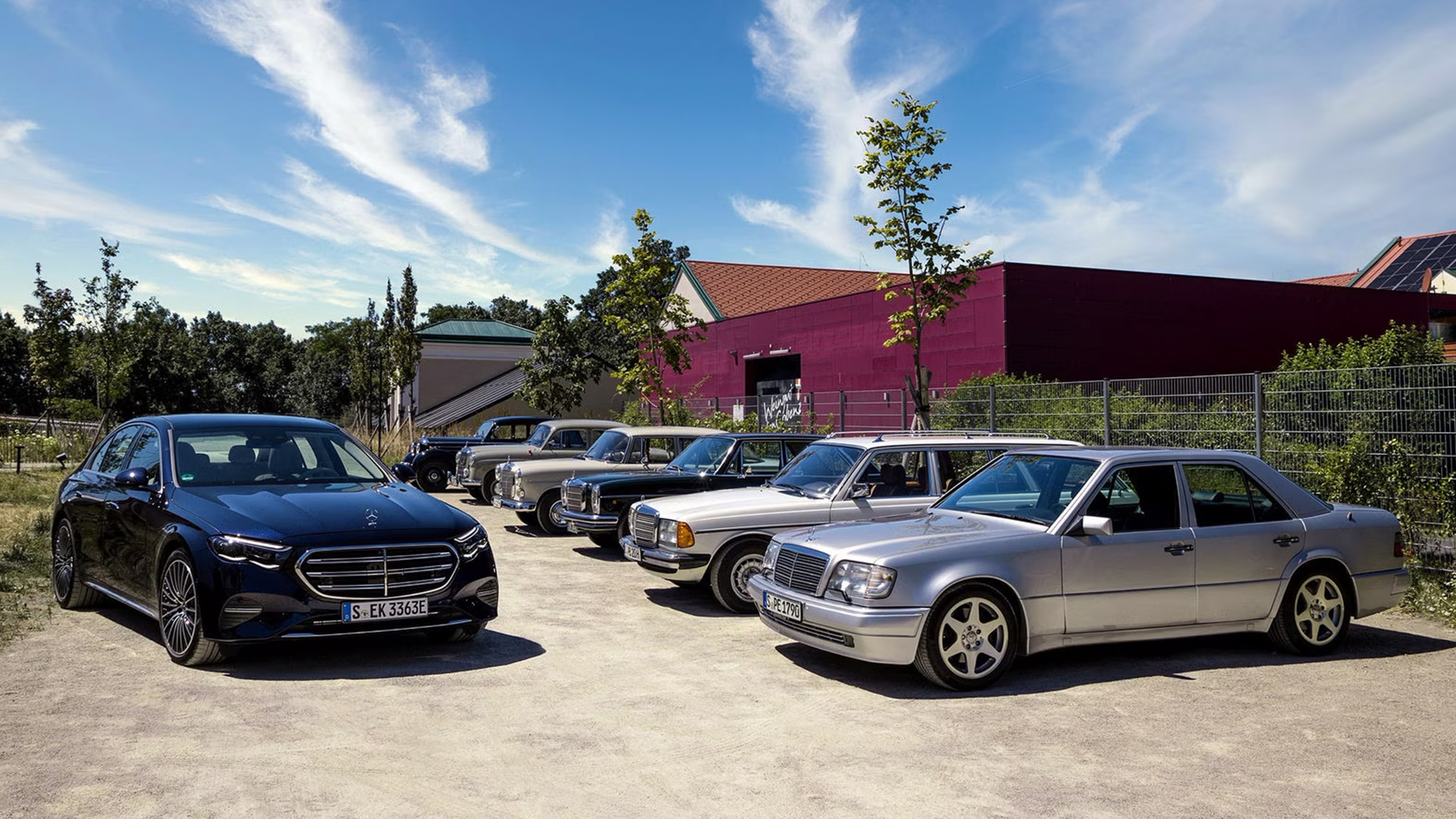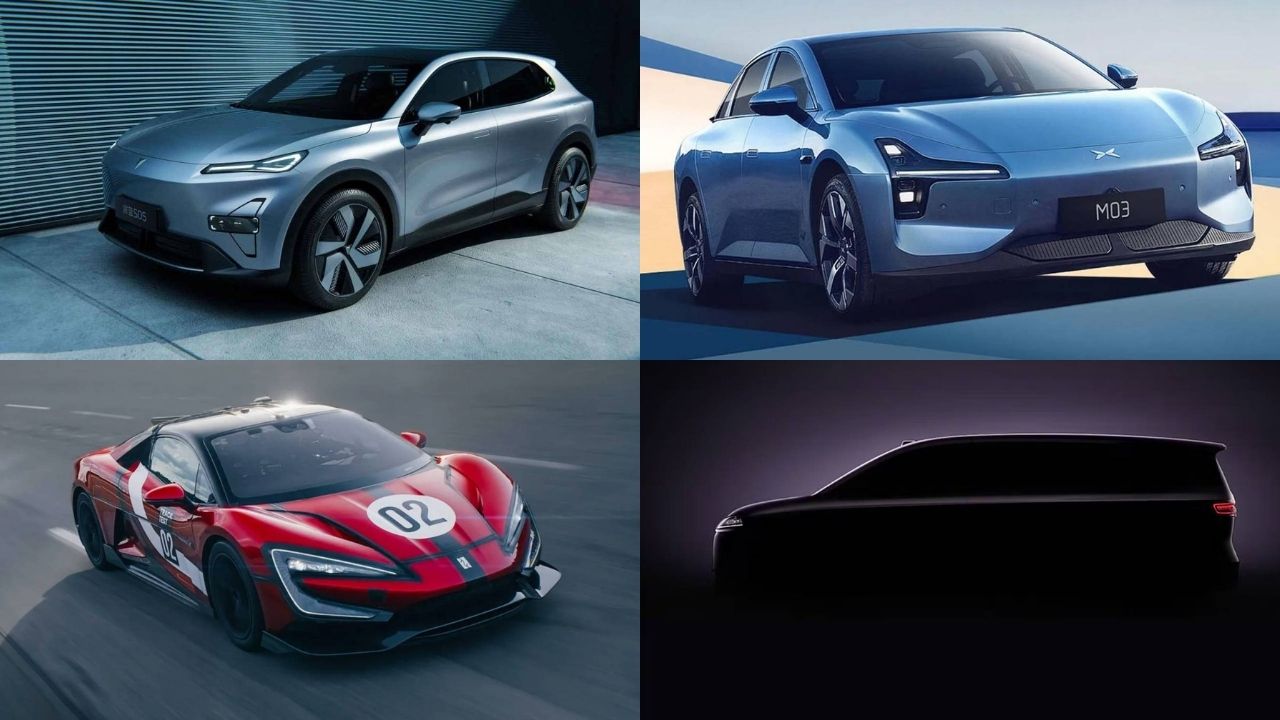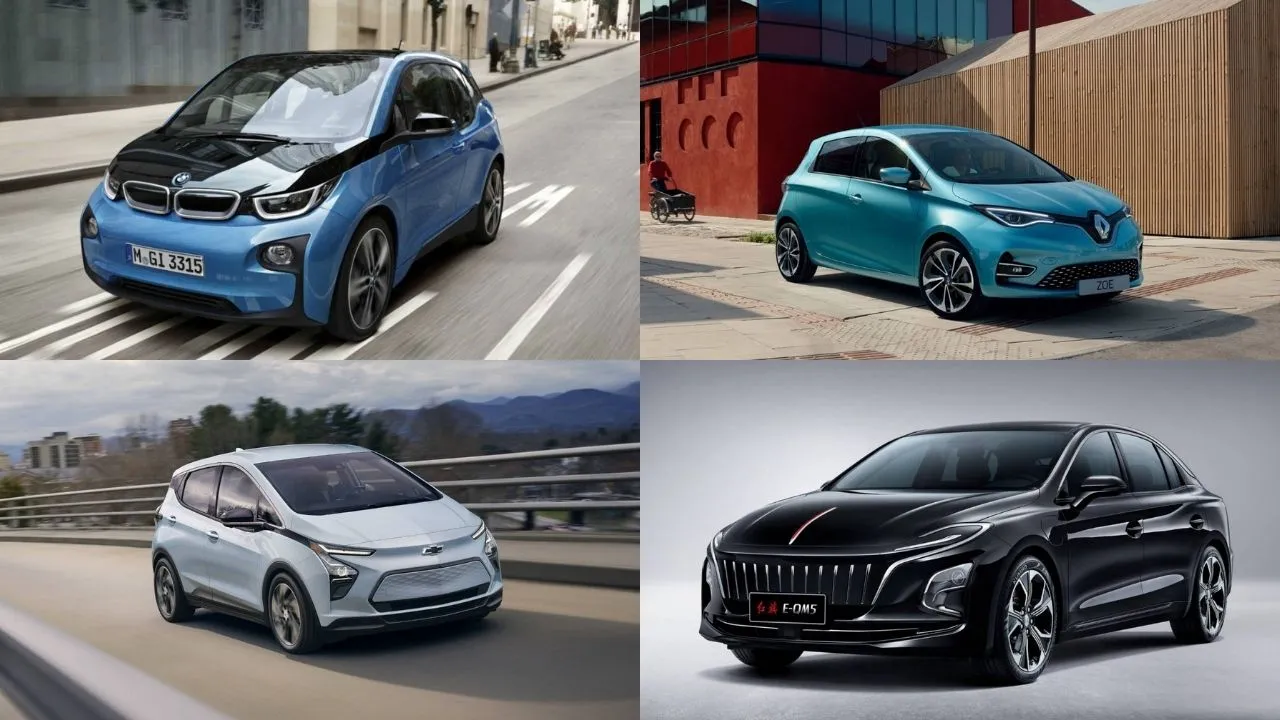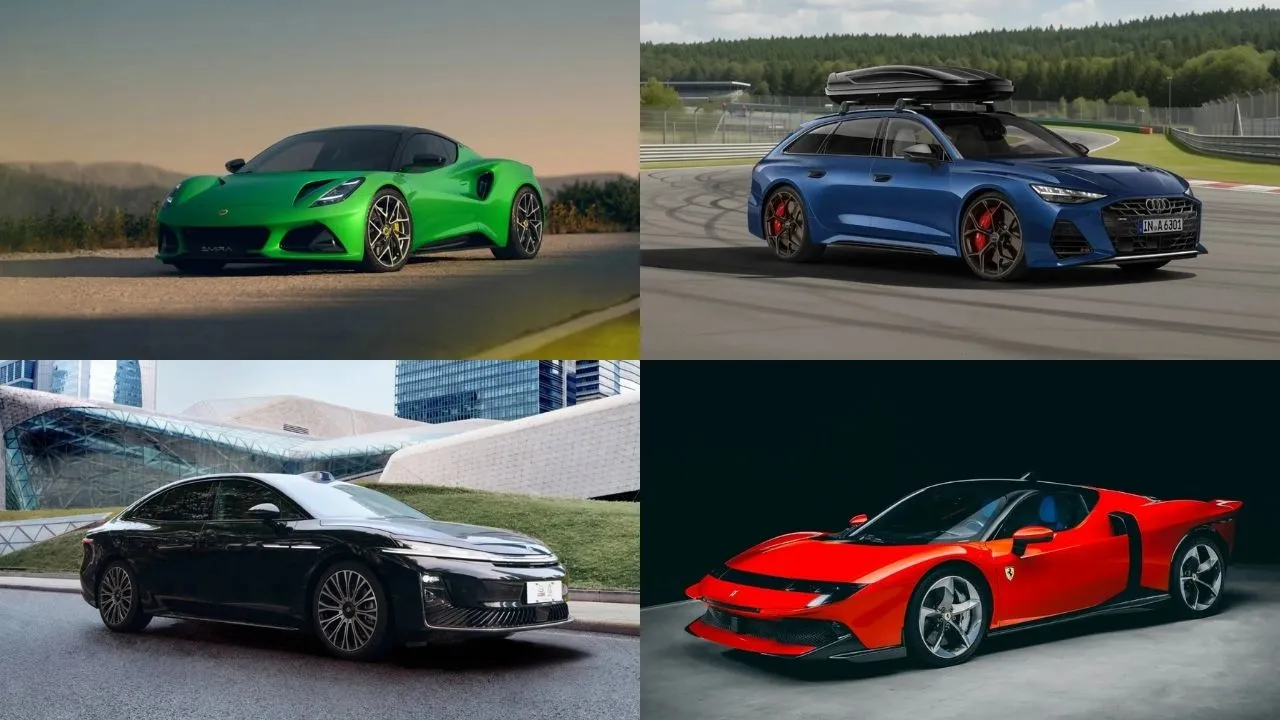Mercedes-Benz E-Class History, Generations & More: The Evolution Of Mercedes’ Best-Seller

With over 15 million units sold, the Mercedes-Benz E-Class is the best-selling car from the German auto giant. Since the very beginning, the E-Class has been an elegant and classy sedan that impresses on all fronts.
It first debuted way back in 1953 as the W120 and 11 generations of the Mercedes-Benz E-Class have been produced since then. In this DubiCars Car Spotlight article, we take a detailed look at the history and generations of the E-Class.
Mercedes-Benz W120 | 1953 – 1962
The roots of the Mercedes-Benz E-Class trace back to when the company introduced the W120 model in 1953. This marked the beginning of the “Ponton” series, characterized by its rounded, pontoon-shaped design.

While not officially bearing the “E-Class” moniker yet, the W120 laid the groundwork for what was to come. Mercedes-Benz also launched the W121 sedan based on the W120. Buyers could choose between 1.8-litre and 1.9-litre inline-4 engine options.
Mercedes-Benz W110 | 1961 – 1968
In 1961, Mercedes-Benz launched the W110, which featured a more elegant design language than its predecessor. This model featured improved safety features and performance enhancements, setting the stage for the E-Class’s future evolution.

The first series which was produced until 1965 featured a 1.9-litre or a 2.0-litre inline-4. The second series that went into production in 1965 came with a more powerful 2.3-litre inline-4 as well. The signature fin-tail rear-end defined this generation.
Mercedes-Benz W114 | 1968 – 1976
The true precursor to the E-Class, however, arrived in 1968 with the introduction of the W114 series. This model featured a more angular design and stately design and a range of engine options to suit different preferences and market demands. For the very first time, an inline-6 engine was placed under the bonnet of this generation.

Petrol inline-4 engines ranged from 2.0-litres to 2.3-litres while inline-6 engine options ranged from 2.3-litres to 2.8-litres. Diesel engine options included inline-4 engines ranging from 2.0-litres to 2.4-litres while the star diesel engine was obviously the OM617 3.0-litre inline-5, known to be one of the toughest and most reliable engines ever made.
Mercedes-Benz W123 | 1976 – 1986
The 1970s saw the debut of the iconic W123 series in 1975. Revered for its durability, safety innovations, and timeless design, the W123 solidified Mercedes-Benz’s reputation for building reliable luxury automobiles. It set new standards in comfort, performance, and longevity, laying the foundation for the E-Class’s future success.

Its iconic design and tough build quality make it much sought-after even today, almost 50 years since it was first launched. The W123 used the same engines as its predecessor. However, Mercedes-Benz also began offering a turbocharged version of the OM617 inline-5 diesel engine.
Mercedes-Benz W124 | 1984 – 1993
Building upon the legacy of the W123, Mercedes-Benz introduced the W124 series in 1984. This generation marked the official debut of the E-Class nameplate in 1993, reflecting the model’s enhanced status within the company’s lineup.

The W124 showcased cutting-edge technology, advanced safety features, and a wide range of engine choices. The inline-4 and inline-6 engines from its predecessor were retained. However, with the W124 came high-performance Mercedes-Benz sedans.
The Mercedes-Benz 500 E featured a massive 5.0-litre V8 engine while the 400 E featured a 4.2-litre V8. The W124 was available in sedan, cabriolet, and estate wagon body styles.
First Generation Mercedes-Benz E-Class (W124) | 1993 – 1997
Mercedes-Benz took on a new naming convention and in 1993 changed the names of all of its cars. This is where the ‘E-Class’ as we know it, took shape. The W124 was already in production and Mercedes-Benz simply changed its name. The ‘E’ moniker was placed ahead of the trim level on all models.

For instance, the aforementioned 500E was renamed the E500, and other trim levels came to be known as E320, E420, etc. In 1993, AMG fettled with the E-Class and launched the insane E60 AMG powered by a 6.0-litre V8 engine and it is now a prized possession for classic car collectors. Here’s how you can register classic cars in the UAE.
Second Generation Mercedes-Benz E-Class (W210) | 1994 – 2003
As the automotive landscape evolved, so did the Mercedes-Benz E-Class. In 1994, the company introduced the W210 series, signaling a departure from the boxy design language of its predecessors. The W210 embraced smoother, more aerodynamic lines while incorporating the latest technological advancements of the time.

Standard versions of the car were powered by inline-4, inline-6, and V6 engine options while AMG derivatives like the E36 AMG, E55 AMG, and E60 AMG used monstrous V8 engines. Mercedes-Benz even launched the bulletproof Guard version to cater to VIPs and businessmen who need more security.
Third Generation Mercedes-Benz E-Class (W211) | 2001 – 2009
The W211 series debuted in 2002, further refining the E-Class’ design, performance, and comfort features. With sleeker styling and improved handling characteristics, the W211 appealed to a new generation of luxury car buyers while retaining the timeless elegance that defined the E-Class lineage.

By this time, the E-Class was being assembled in nine countries around the world and had gained immense popularity. A variety of engine options were offered for buyers with varying requirements. The smallest engine on offer was a 1.8-litre inline-4 and the largest one on offer in the full-blown AMG was a 6.2-litre V8. There was also a 5.4-litre supercharged V8 on offer.
Fourth Generation Mercedes-Benz E-Class (W212) | 2009 – 2016
In 2009, Mercedes-Benz unveiled the W212 series, marking the fourth generation of the E-Class. This is the most popular E-Class of all time and thereby most commonly spotted as well. This iteration introduced a host of groundbreaking technologies, including advanced driver assistance systems, fuel-efficient engines, and luxurious amenities.

The smallest engine on offer was a 1.6-litre turbo-petrol inline-4 while the largest still remained the 6.2-litre AMG V8. In 2013, the E-Class underwent a major facelift, ushering the sedan to the modern era, with Mercedes-Benz’s new design language.
Fifth Generation Mercedes-Benz E-Class (W213) | 2016 – 2022
The fifth generation of the E-Class, represented by the W213 series, made its debut in 2016. Embracing a more dynamic design language, the W213 combined sleek aesthetics with state-of-the-art technology, including semi-autonomous driving capabilities, digital instrument clusters, and enhanced connectivity features.

Our detailed review of the 2021 Mercedes-Benz E300 shows just how modern and elegant this generation was. This generation prioritised environment-friendliness and hence more efficient engines made their way under the bonnet of the E-Class.
The smallest engine was a 1.5-litre turbo-petrol inline-4 while the large 6.2-litre V8 in the top-spec AMG models was replaced by a more efficient 4.0-litre V8. Plug-in hybrid variants were also available.
Sixth Generation Mercedes-Benz E-Class (W214) | 2023 – Present
In 2023, Mercedes-Benz introduced the latest iteration of the E-Class — the W214 series. Building upon its predecessors’ successes, the W214 represents the pinnacle of automotive engineering and luxury craftsmanship.

With electrification becoming increasingly prevalent, the W214 incorporates hybrid and electric powertrains, offering improved efficiency without compromising performance. It is only available with 2.0-litre inline-4 and 3.0-litre inline-6 mild-hybrid or plug-in hybrid powertrain options.
Most Popular Mercedes-Benz E-Class Generations In The UAE
The fourth & fifth generations of the Mercedes-Benz E-Class are the most popular generations in the UAE. The sixth generation was only launched recently and will take some more time to gain popularity. Classic car enthusiasts on the other hand prefer the W110, W114, W123 & W124.

Mercedes-Benz E-Class Prices
A brand-new sixth-gen Mercedes-Benz E-Class costs between AED 335,000 & AED 420,000. Looking into the back catalogue though, brings prices down considerably. Prices start at AED 13,000 and go up to AED 450,000 depending on the generation, model, and trim.
Find new Mercedes-Benz E-Class for sale in the UAE & used Mercedes-Benz E-Class for sale in the UAE.
Subscribe to DubiCars’ WhatsApp Channel for the latest automotive news, guides, polls, and informative infographics.
Also Read:
– Ramadan Car Offers In The UAE: A Comprehensive List
– Top 10 Cars From The 2000s That Redefined Speed & Performance
– Mercedes-Benz S-Class History & Generations








